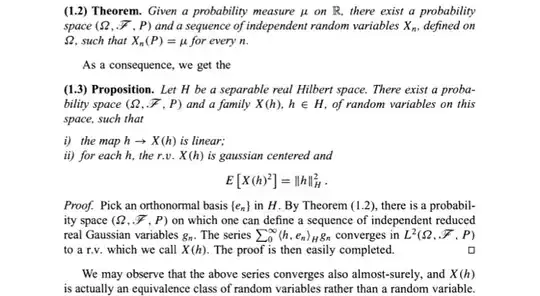I'm reading Continuous Martingales and Brownian Motion by Revuz and Yor. In page 16 we find the following

I'm having some trouble understanding the first line after the proof of the proposition. Obviously, we can find a subsequence of the partial sums that converge a.s. to $L^2$-limit, but I don't know how to prove that actually the whole series is the one that converges...
I think it has something to do with the fact that we can rearrange the terms of the sum and still get a convergent subsequence, but then the exceptional set would depend on the arrangement, and as we have uncountable many rearrangements, it wouldn't be possible to find an exceptional set that works well for every arrangement.
Any kind of help is appreciated. Thanks in advance